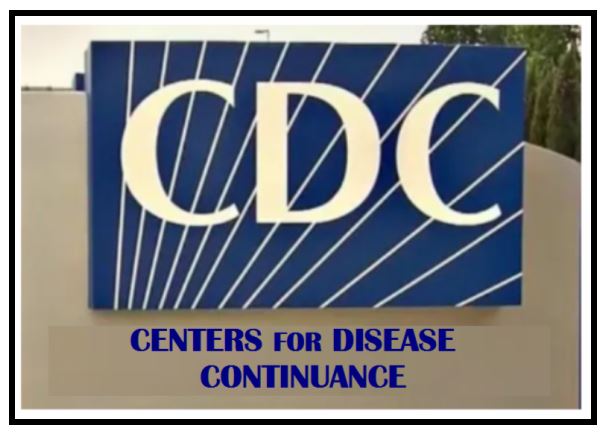Dr. H. Gilbert Welch’s book “Overdiagnosed” warns about the dangers of being diagnosed with conditions you don’t have
02/13/2025 / By Arsenio Toledo

- In recent years, the medical community has become increasingly concerned about overdiagnosis, a situation where individuals are diagnosed with conditions that may never cause symptoms or harm.
- Overdiagnosis has significant implications for patients, doctors and the healthcare system. It raises questions about the balance between proactive healthcare and unnecessary treatment.
- Dr. H. Gilbert Welch’s book provides examples, such as Mr. Lemay, who received life-saving treatment for severe hypertension, and Mr. Bailey, whose mild hypertension diagnosis led to a dangerous side effect. Another case is Mr. Roberts, who experienced a car accident due to diabetes medication-induced low blood sugar.
- The debate around overdiagnosis extends to cancer screening, particularly for prostate and thyroid cancers, where the detection of slow-growing cancers can lead to unnecessary invasive treatments and serious side effects.
- To tackle overdiagnosis, patients and healthcare providers need to adopt a more critical approach to diagnosis and treatment, questioning the necessity of tests and considering alternative approaches like lifestyle changes or watchful waiting. This involves balancing diagnostic expertise with patient-centered care.
In recent years, a growing concern has emerged in the medical community: overdiagnosis, a phenomenon where individuals are diagnosed with conditions that may never cause symptoms or harm. This issue, explored in depth by Dr. H. Gilbert Welch in his book “Overdiagnosed: Making People Sick in the Pursuit of Health,” has far-reaching implications for patients, doctors and the healthcare system.
As modern medicine continues to advance, the ability to detect abnormalities has increased, but so has the risk of diagnosing conditions that may not require intervention. This trend raises critical questions about the balance between proactive healthcare and unnecessary treatment.
Overdiagnosis occurs when medical tests reveal abnormalities that, while technically correct, do not pose a threat to a patient’s health.
Welch highlights several examples in his book, including the case of Mr. Lemay, who was diagnosed with severe hypertension after an emergency room visit and received life-saving treatment. However, the story of Mr. Bailey, an 82-year-old farmer with mild hypertension, illustrates the potential harm of overdiagnosis. His treatment led to a dangerous fainting spell, underscoring the fact that not all diagnoses warrant aggressive intervention.
Similarly, one Mr. Roberts, diagnosed with mild diabetes, experienced a car accident due to medication-induced low blood sugar, demonstrating how well-intentioned treatments can sometimes cause unintended harm.
The problem of overdiagnosis is not limited to conditions like hypertension or diabetes. Cancer screening, particularly for prostate and thyroid cancers, has become a focal point in this debate. Advances in imaging and blood tests have led to the detection of cancers that are so slow-growing that they would likely never cause symptoms or shorten a patient’s life. Yet, once diagnosed, patients often face pressure to undergo invasive treatments such as surgery or radiation, which can lead to serious side effects.
The roots of overdiagnosis are multifaceted. The expansion of medical technology has made it easier to identify minor abnormalities, but this does not always translate to better patient outcomes.
Additionally, financial incentives within the medical-industrial complex — pharmaceutical companies, medical device manufacturers and healthcare providers — often favor more diagnoses and treatments. There is also a cultural belief that early detection is always beneficial, even when evidence does not consistently support this claim.
To address the issue of overdiagnosis, Welch explains how patients and healthcare providers must adopt a more critical approach to diagnosis and treatment. This includes questioning the necessity of certain tests, weighing the potential benefits against the risks and considering alternative approaches.
For example, lifestyle changes or watchful waiting may be more appropriate for mild conditions that are unlikely to progress. Patients should also be vigilant about their symptoms, seeking care when necessary but approaching routine screening with caution.
Historically, the rise of overdiagnosis mirrors broader trends in modern medicine, where the focus on prevention and early detection has sometimes outpaced the evidence supporting such approaches.
The shift from symptom-based medicine to asymptomatic diagnosis, driven by advances in technology and diagnostic guidelines, has created a landscape where more people are labeled “sick” than ever before. This shift has implications not only for individual patient care but also for public health trends, as resources are increasingly directed toward managing conditions that may never require intervention.
In conclusion, overdiagnosis represents a critical challenge in the modern healthcare system, one that requires a reevaluation of how we approach diagnosis and treatment. While early detection has undeniably saved lives, it is equally important to recognize when less intervention may be the best course of action.
Patients, armed with knowledge and skepticism, play a vital role in navigating this complex landscape, as do healthcare providers who must balance their diagnostic expertise with a commitment to patient-centered care.
Watch this video going into detail regarding Dr. H. Gilbert Welch’s fascinating book “Overdiagnosed: Making People Sick in the Pursuit of Health.”
This video is from the BrightLearn channel on Brighteon.com.
Sources include:
Submit a correction >>
Tagged Under:
bad doctors, dangerous doctors, diagnosis, H. Gilbert Welch, health care, health coverage, healthcare, medical diagnostics, medical industry, medical violence, overdiagnosis, patient care
This article may contain statements that reflect the opinion of the author




















